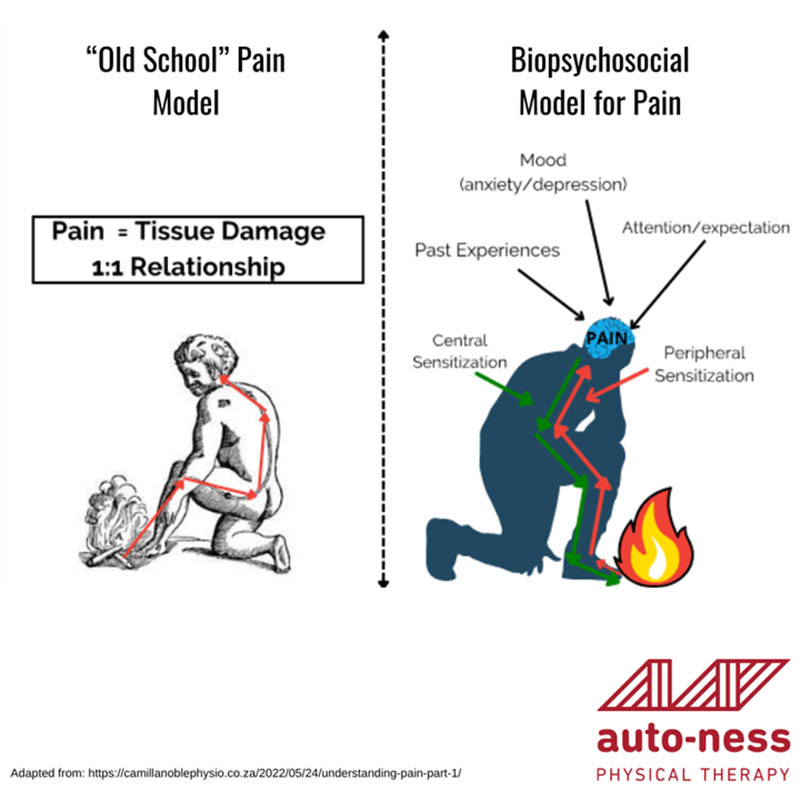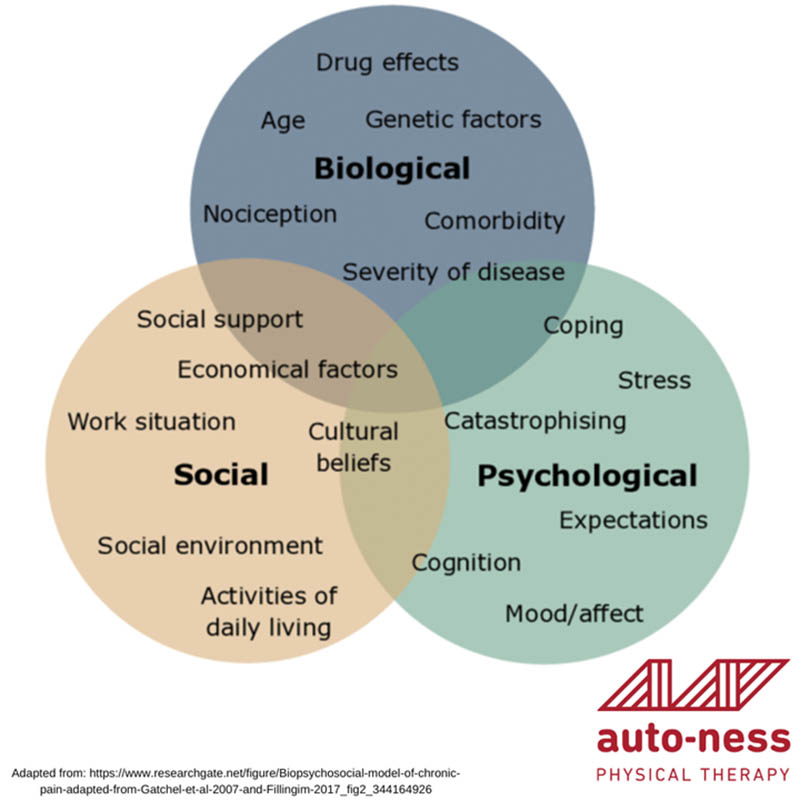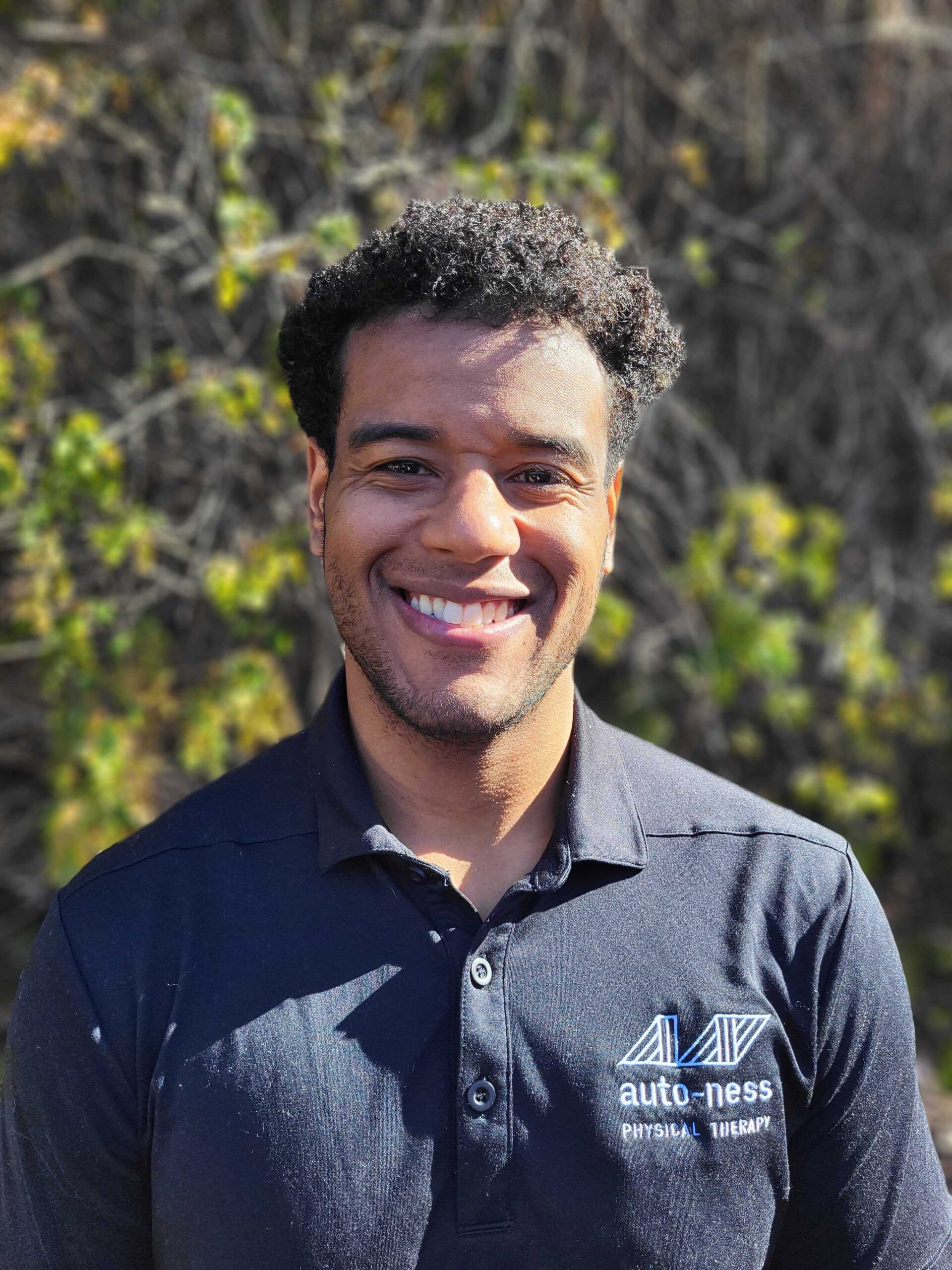Pain is not merely a physical sensation but a complex experience that involves our emotions, thoughts, and environment. This holistic understanding, particularly significant for active adults who love running, is based on the biopsychosocial model of pain.
The Biopsychosocial Model of Pain: A Comprehensive View
The biopsychosocial model of pain challenges the traditional view that pain is solely a physical symptom. It posits that pain is influenced by biological factors (such as nerve damage or inflammation), psychological factors (including emotions and thoughts), and social factors (like family support and cultural beliefs). Understanding pain through this lens encourages a more compassionate, comprehensive approach to treatment.
Insights: Changing How We Perceive Pain
Adrian Lowe’s work, particularly “Why Do I Hurt?”, emphasizes the importance of education in managing pain. Lowe argues that understanding the mechanics of pain can itself reduce the intensity and fear associated with it. This approach, known as pain neuroscience education, teaches individuals that pain does not always equate to physical harm, but can also be influenced by stress, anxiety, and other non-physical factors.
Harnessing Neuroplasticity in Pain Management
The brain’s interpretation of pain signals can be influenced by a variety of factors, including emotional states, past experiences, and expectations. By engaging in specific practices and therapies, it’s possible to ‘retrain’ the brain to perceive pain differently, thereby reducing the pain experienced. Here are several strategies that leverage the power of neuroplasticity for pain management:
- Graded Exposure to Movement: For individuals avoiding certain activities due to fear of pain, gradually reintroducing these movements can help. This technique, known as graded exposure, allows the brain to become accustomed to the movement without triggering pain responses, essentially ‘rewiring’ the brain to understand that the activity is safe.
- Positive Visualization and Imagery: Engaging in positive visualization and imagery exercises can promote neuroplasticity by creating ‘mental rehearsals’ of pain-free movements. This practice can help reshape neural pathways, making actual physical movements less painful.
- Cognitive Behavioral Therapy (CBT): CBT can modify the thought patterns that influence pain perception. By addressing negative thoughts and behaviors associated with pain, CBT can help change the way the brain processes pain signals.
- Physical Therapy and Exercise: Tailored physical therapy and exercise programs can strengthen the body and improve movement efficiency. This not only addresses the physical aspects of pain but can also alter the brain’s anticipation of pain associated with movement, reinforcing positive neural pathways.
Practical Applications: Integrating Holistic Pain Management into Daily Life
For active adults, particularly those dealing with common runner pathologies like Achilles tendinitis or plantar fasciitis, integrating these concepts into daily life can make a significant difference. Here are some actionable steps:
- Education: Learn about the physiology of pain to reduce fear and other aspects of movement. Auto-Ness Physical Therapy offers resources and sessions on understanding your pain and ceycles of pain.
- Mindfulness and Meditation: Incorporate mindfulness techniques to manage stress and anxiety, which can exacerbate pain.
- Physical Therapy: Seek out physical therapy services that not only focus on the physical aspect of recovery but also incorporate education about pain. For instance, “Physical therapy for neck and shoulder pain near me” can be a search starting point for addressing specific pain issues with a holistic approach.
- Lifestyle Adjustments: Make lifestyle changes that support overall health, such as maintaining a balanced diet, ensuring adequate sleep, and engaging in regular, low-impact exercise. Functional fitness San Diego programs can offer structured activities designed with this in mind.
- Support Systems: Engage with support groups or therapy sessions to address the emotional and social aspects of living with chronic pain.
Conclusion: Embracing a New Paradigm
By adopting a holistic view of pain, active adults can empower themselves to manage pain more effectively, leading to improved well-being and a continued active lifestyle. This approach not only alleviates physical symptoms but also addresses the psychological and social dimensions of pain, fostering a more resilient, vibrant community of runners and athletes.
For more insights into managing runner’s injuries and enhancing your running journey, explore the Auto-Ness Physical Therapy blog, where we delve into various aspects of runner health, recovery techniques, and preventive care.
Remember, understanding and managing pain is a journey—one that doesn’t have to be taken alone. With the right knowledge, support, and resources, you can navigate this path with confidence and grace.
FAQs:
What is the biopsychosocial model of pain?
It’s a model that explains pain as a complex experience influenced by biological, psychological, and social factors, rather than just a physical symptom.
How can understanding pain help in its management?
Education about the nature of pain can reduce fear and anxiety, leading to better pain management strategies and outcomes.
What role does physical therapy play in holistic pain management?
Physical therapy, especially when incorporating education about pain, can address the physical causes of pain while also mitigating psychological and social factors that exacerbate it.
Can lifestyle changes really affect pain levels?
Yes, changes such as improving diet, increasing physical activity, and managing stress can significantly impact the perception and management of pain.
Where can I find more resources on managing pain holistically?
The Auto-Ness Physical Therapy blog offers a wealth of information on holistic approaches to managing runner’s injuries and pain.



